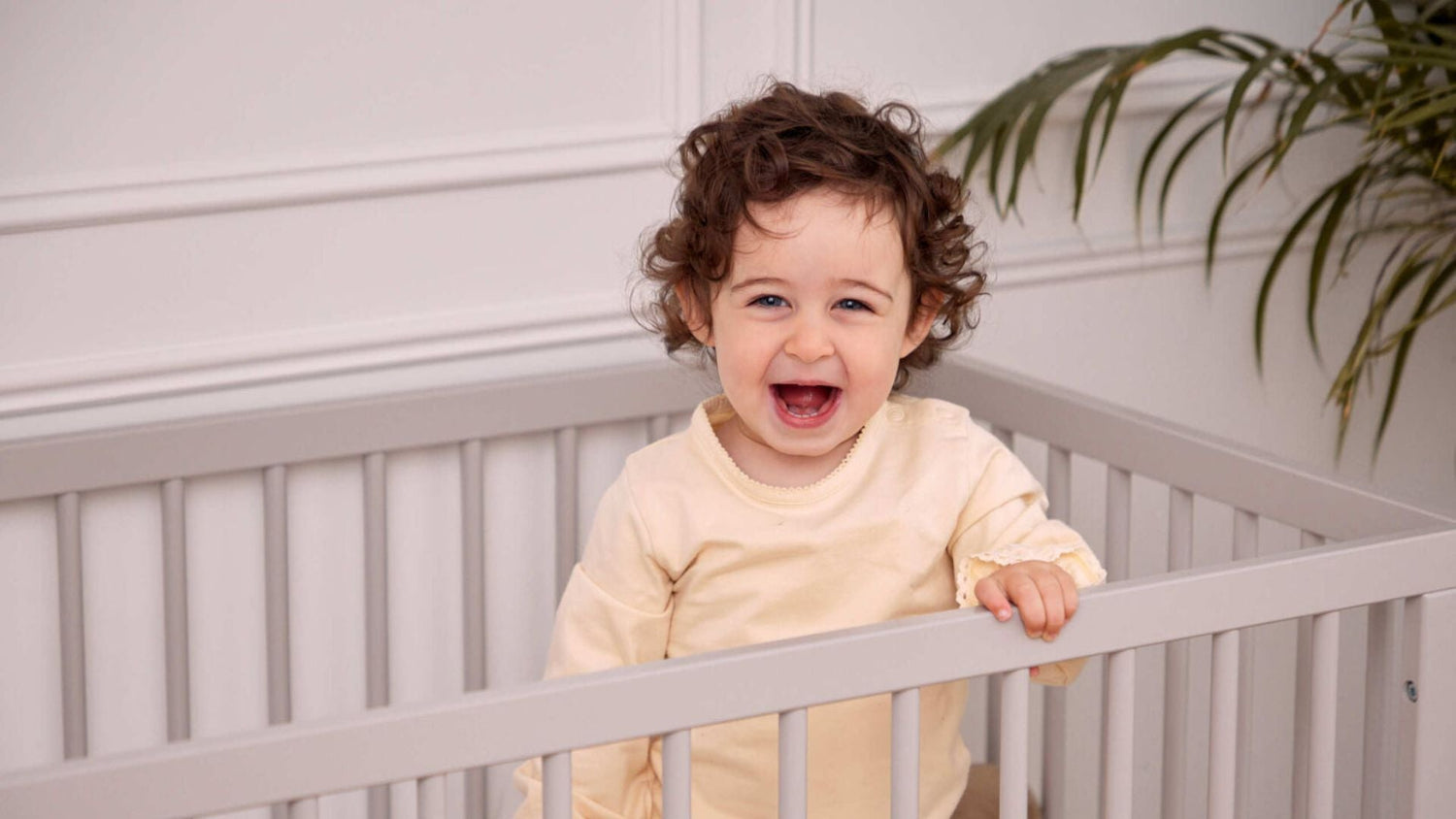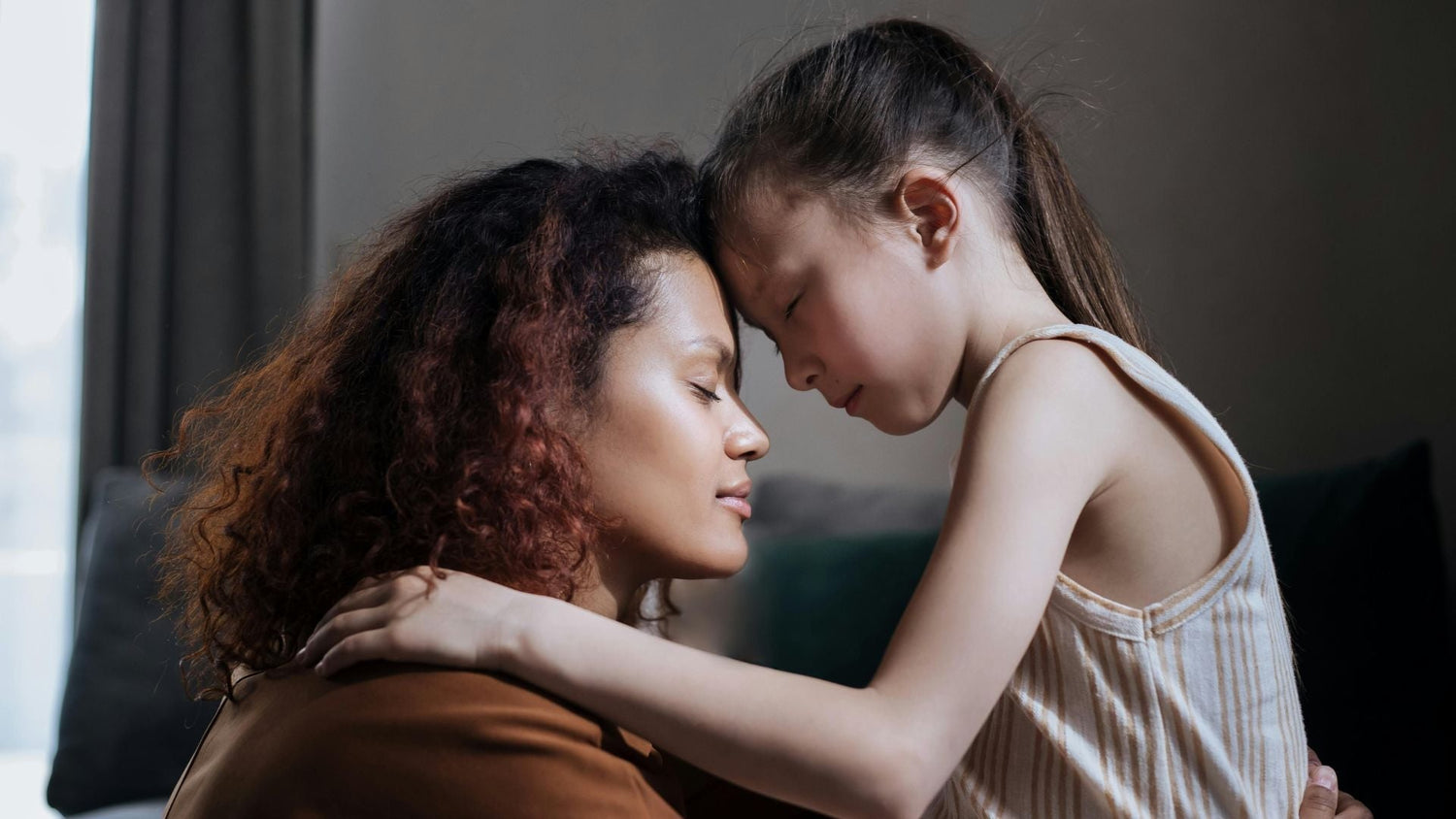Learning to stand up in the cot is a rite of passage! As soon as your child developmentally develops this skill set then you can be sure that they will be intent on doing this in their cot when they maybe should be going to sleep!
Firstly, celebrate this developmental stage. Although you will be frustrated by it, this is a promising milestone and in this first year, your child is rapidly growing and getting stronger and before you know it- hopefully, like it or not, they will be running around you or in some cases running rings around you!
When children learn to pull themselves up- they are mostly not good at getting themselves back down again and when they are going asleep parents may enter into a power struggle of your child standing and you laying them down, only for them to get straight back up again – this can go on indefinitely.
I once met a parent who had counted 140 times!

Newly acquired skills
So I really don’t want that level of stress for you or your child – I also know that no one wins that battle and that few children will be able to go to sleep with such stimulation; but I do want you to gently, respectfully, support and encourage them to know when it is time to lay down and go to sleep and when it is time to show off their newly acquired skills.
Firstly let’s teach them the full skill of getting up and also getting back down again. Do this entirely separate to sleep- practise and show them loads how to get up- pull themselves up on the couch or chair and also how to get back down. I often encourage that you do this in the cot, during non-sleep time – using words that go with the downward activity and showing them how to get down by running their hand down the bars of the cot and using words that go with the action such as “lie down".
I also suggest spending a lot of time playing ring a rosy with them with the emphasis on “all fall down”. I do think that it is important that you ensure that they are getting plenty of opportunity by day to have age-relevant floor time and exercise together with outdoor activity. Now also ensure that they are not spending too much time in a buggy, car seat or high chair.
Baby proof your house
If you haven’t already then baby proof your house so that your child is free to safely roam and explore. I do find that children that spend too much time in playpens or in a restricted space seem to want to climb more at bedtime.
To that end, provide lots of climbing opportunities, simply put your couch cushions on the floor and make an obstacle course for day time games. All these activities by day then can help dilute the urgent need to show off and practise their new ability at bedtime.
Now let’s turn our attention to the problem area at bedtime. A bedtime routine is nearly always needed to emotionally bridge the space before it is time to sleep and the activity of the day. The focus of a calm, bedtime ritual is to help prepare your child’s body for the onset of sleep.
I encourage a bedtime routine in the bedroom that your child will sleep in and that you might spend at least 20 minutes on connection and engagement in a dimly lit environment- then once you put them into the cot, if they are standing then, I encourage a modified version of my stay and support approach especially for those of you, who do not routinely stay but now need to due to standing.
Stay and support strategies
Always manage your child from beside the cot, laying low on the floor. Together with all the other physical and emotional stay and support strategies, place your child in their cot, lay on the floor- if they stand, allow this- let them get it out of their system and then gently place them down again. If they stand up again, this time, stay low on the floor - so for all intents and purposes, you are underneath where they would be if they were lying down.
Now talk them down- use the words that you encouraged by day “lay down” “all fall down”- and with your support, your child will slowly (a) not feel the need to stand as they have practised by day (b) understand to be near you they will need to lay down to be at your face level (c) that laying down helps them go to sleep.
As required, support them to go to sleep and then over the course of 2-3 weeks you can use my stages to sleep approach to slowly remove yourself from the bedroom now that standing up has become a non-issue.
Please be mindful that if your child is overtired or not tired enough at bedtime then the approach will not be as effective, so it is always useful to introduce my feeding and sleeping balances too, whenever you are struggling with any aspect of your child’s sleep. Good luck! I look forward to hearing about your progress.
Lucy Wolfe, is a Sleep consultant, Co-creational Parent and Relationship Mentor, Author of The Baby Sleep Solution and All About The Baby Sleep Solution, creator of “Sleep Through”, a natural bed and body sleep spray and relaxing rub and Mum of four. She runs a private sleep consulting practise where she provides knowledge, expertise and valuable support to families around the world. See www.sleepmatters.ie |+35387 2683584 or |lucy@sleepmatters.ie





